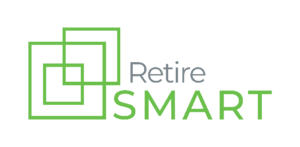
As you approach retirement, one of the most crucial financial decisions is what to do with your 401(k) plan. With various options, including rolling over funds into an IRA, it’s vital to understand both benefits and risks when making this decision. This article will guide pre-retirees through 401(k) rollover strategies, including avoiding penalties, managing tax liabilities, and considering factors such as Roth versus traditional IRAs to ensure a flexible and informed retirement pathway.
What to Know About 401(k) Rollovers in Retirement
A 401(k) rollover involves transferring retirement savings from an employer-sponsored 401(k) into an Individual Retirement Account (IRA) or another qualified plan. Here are key aspects to consider:
Types of Rollovers
- Direct Rollover: Transfers funds directly from your 401(k) to an IRA, minimizing tax withholdings and penalties. This can help preserve retirement savings.
- Indirect Rollover: You receive 401(k) funds personally and must deposit them into an IRA within 60 days. Failure to do so may result in taxes and early withdrawal penalties.
Rollover Timing
The timing can affect your financial situation:
- Work Status: If employed at age 59½ or older, you may access “in-service” rollovers without penalties. Assess your employer’s plan benefits before making a decision.
- Retirement Plans: Consider retirement goals and financial plans. Well-timed rollovers can align strategies for withdrawals and tax management.
Regulations and Penalties
Understanding rollover regulations prevents costly mistakes:
- Age Limits: Rollovers generally occur after age 59½ to avoid penalties. Exceptions like the Rule of 55 allow penalty-free withdrawals for separated employees over age 55.
- Tax Implications: Failure to complete timely rollover may lead to taxation and penalties if under age 59½.
Why Rolling Over Your 401(k) Matters
Rolling over a 401(k) offers significant potential benefits but must be understood alongside possible risks:
Flexibility and Access
- Broader Investment Options: IRAs typically offer more choices than employer plans, allowing for portfolios aligned with risk tolerance and goals. However, this may come with increased investment responsibility and risks.
- Consolidation and Simplification: Simplifying various 401(k) plans into one IRA improves asset management but may impact ERISA protections.
Tax Management
- Roth Conversion Opportunities: Allows conversions to a Roth IRA for tax-free withdrawals during retirement. Consider conversion taxes and planning to optimize benefits.
- Deferred Tax Growth: Continues tax-deferred growth, aligning with withdrawal strategies. Maximize benefits while considering tax implications.
Cost Efficiency
- Lower Fees: IRAs might offer lower fees, potentially leading to savings and growth. However, be aware of associated costs and management fees in IRAs.
- Controlled Withdrawals: Offers control over withdrawals and timing, affecting tax effectiveness, but plan loan options in 401(k)s are lost.
Estate Planning Benefits
- Beneficiary Flexibility: Designate beneficiaries and manage distributions to ensure effective inheritance planning, mindful of regulatory constraints.
- Inheritance Options: While the SECURE Act altered stretch provisions, planning helps manage inherited assets within limits.
Penalty Avoidance
- Securing Compliance: Direct rollovers avert penalties from mismanaged transfers. Ensure proper structures align with IRS rules.
- Age-Specific Rollovers: Use age-related provisions wisely to prevent penalties, considering potential NUA loss for company stock.
Conclusion
Rolling over your 401(k) to an IRA can provide flexible management and tax planning advantages. Evaluating direct and indirect rollovers, tax consequences, and plan features is crucial for effective retirement portfolio management. Early planning, understanding account differences, and seeking financial advice enhances your roadmap to tailored retirement goals. Smart decisions ensure financial control and long-term retirement security.
Compliance and Disclosure Considerations for 401(k) Rollovers:
When contemplating a 401(k) rollover, it’s essential to understand both benefits and potential conflicts. Advisors should disclose any conflicts of interest related to rollover recommendations and demonstrate why transitioning funds to an IRA is in your best interest, considering factors such as fees, services, and investment choices. Additionally, ensure your advisor provides a written acknowledgment of fiduciary responsibility. Thorough documentation of this advice, along with adherence to impartial conduct standards, is crucial. Consult with your advisor to ensure compliance and receive personalized guidance for your unique situation.




